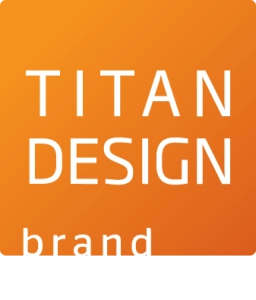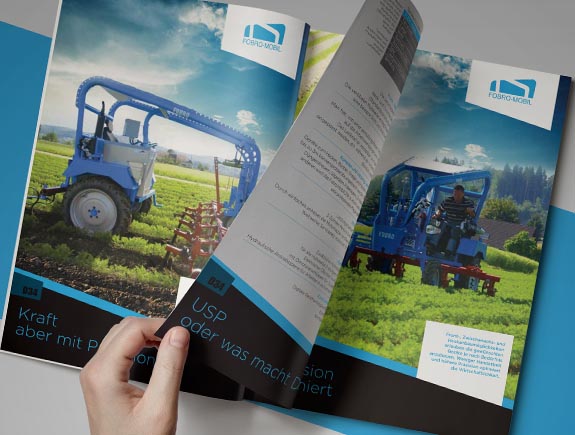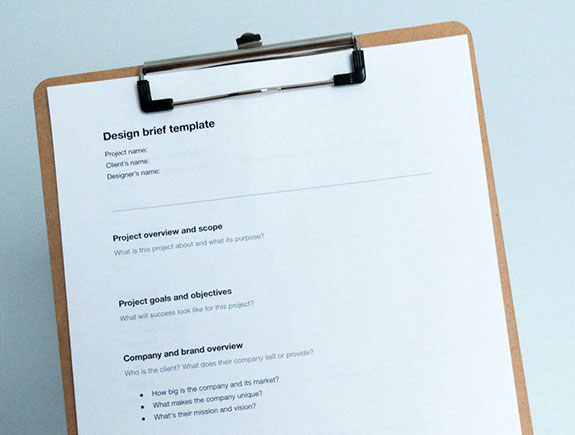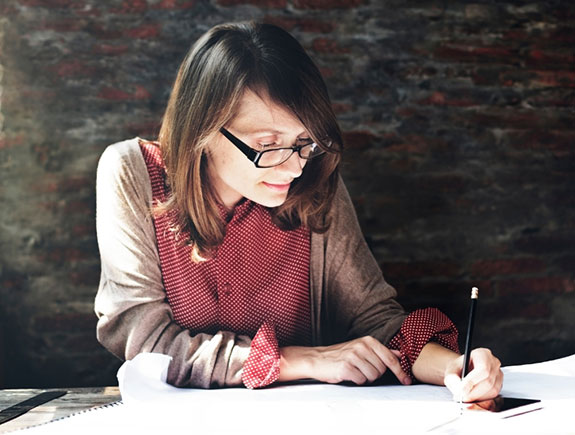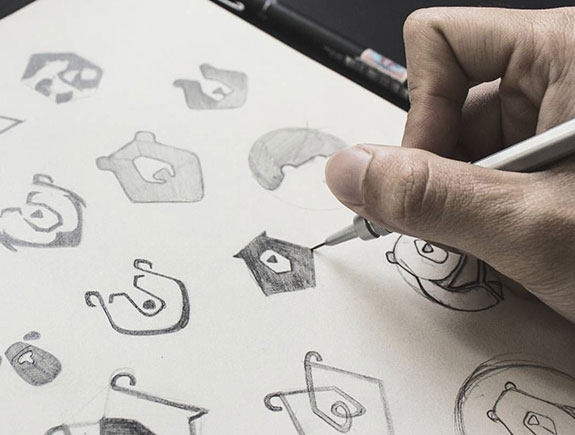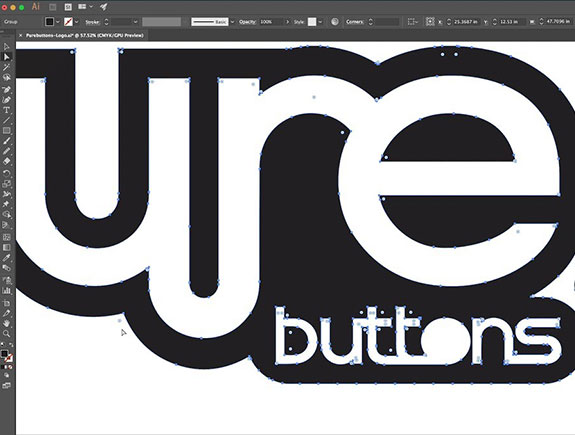This blog post is dedicated to catalogs and brochures design. We will all agree on the fact the well-designed catalog can do wonders for client’s business and attract many new buyers. Powerful brochures or catalogs can also educate the reader, present the company as an authority on the market, expand the potential target audience span and finally, inspire the buyers to make purchases.
On the other hand, the fact is that insufficiently creative and generic brochures will not bring any new buyers, quite the opposite, it will turn them away from the client’s competition.
Imagine the situation. Tourism fair. You get many brochures, keep them in your hand, and at one point, throw them all away into the trash.
But, somehow, only two brochures are left and you are thinking about which one to keep. One of them is full of beautiful beach photos from the Thailand beaches, so it looks more like a monograph from a photo exhibition and you decide to keep that one. The additional info is there as well but nicely presented somewhere at the bottom. The other one has a stock photo from a Halkidiki beach and the boring excel columns with pricing and other info.
Of course, you would choose the first catalog because apart from the beautiful photos it attracted you with a nice presentation of info, quite enough for you to wish to visit their website.
If you want your catalog to be the first one from our story, keep reading this post and our best tips for designing catalogs.
1.Create a brochure or a catalog everyone would like to keep
The point of a quality design is to exist as long as possible. In other words, the client should be happy with the design even after some time (because some clients will create catalogs and publications once in a few years). This way your client and his/her company will be able to show, for example, a yearly report and be proud of results and their nice presentation in that publication.
People will keep the catalog or a brochure if they have top value, if they educate the readers, inform them. Next, the printing paper should be of high quality, the choice of colors, elements, fonts, everything should be in accordance with the company’s visual identity.
Of course, to make any brochure attractive to the target audience, it is necessary to create any part of its design in an innovative and different way. There’s a lot of space for experimenting, starting with the way the brochures have been folded, to positioning and text formatting.
2. Always keep in mind the purpose of a brochure/catalog
While we are in the middle of a creative process, we always consult the clients and ask for a couple of answers from them. We need to know the purpose for creating this type of printed material, next, where would it be distributed, and finally who would it be dedicated to.
Potential buyers of any product, exhibition visitors, or stakeholders in a foundation – they are the target audience, catalogs and brochures are dedicated to them. The reaction to the content is a challenge for a designer as it is exactly the designer that should predict the reaction and inspire people with the design.
When dealing with any design task, we always focus on a buyer persona, not on the client. This way, we do the right thing for the client too, as the company will reach real and loyal buyers. To be fully dedicated to a content consumer is the most important goal in this process.
3. Simple yet effective ideas are always the best choice
Sometimes the simplest ideas are the best ones. We often emphasize the less is more and this mantra gave us the best ideas in many projects.
People are visual types and react to nice photos. So the selection of photos should be carefully done to get the right reaction from a target audience. They should be relevant to a specific industry, original, adapted to the topic of a catalog/brochure.
If a design team has more good ideas (sorting elements, folding paper, or one dominant color in the catalog), we strive to focus on one, so to avoid distraction from the product. Remember, only one different, innovative or creative idea is enough to get the wow effect.
4. The quality of the paper is extremely important
In business communication, we take care of nonverbal communication and the impression it leaves in the first few minutes of conversation. The quality of the paper is extremely important. Simply put, the first impression is the most significant one and we don’t want anyone from our target audience to have a negative feeling when touching the catalog/brochure.
The next sentence is especially addressed to all current and potential clients. By using a high-quality paper you are in fact sending a message to your potential buyers that you do care about them, that you value their opinion, and that you value your brand. Make a room for this in your budget and be proud of the results.
5.CTA (call to action) is a must
No matter how well designed the brochure is if it doesn’t have a call to action, its purpose will not be completed. It is simply not a strong reason for purchase if the brochure is pretty.
In the world of marketing, there is nothing we can assume or don’t assume. That is why it is important to provide a clear explanation to our buyers and communicate what we expect from them. If we expect them to buy a product or visit an exhibition, discover useful info about the company on its website or anything else, then all this should be clearly communicated.
It is not true that everything boils to attractiveness but in this case, things are working in a different way, and it is needed to additionally encourage buyers to take an action (shop, visit a happening, navigate a site) because, without this, you cannot have a quality brochure/catalog.
Titan enjoys challenges, contact us
In a nutshell, creating a brochure/catalog of a product or service is a creative and responsible project. We enjoy it immensely. Take a look at our solution for the DR VET catalog for dogs and cats supplements, and next week expect one more case study that will be connected with a catalog/brochure design.
In case you like this post, feel free to share it with your colleagues and friends and the ones who might find this topic valuable.
1. Brif
Prvi i korak na ovom kreativnom putu se zove dizajnerski brif. To je ona preliminarna faza projekta, kada dizajner i klijent razgovaraju o potrebama, očekivanjima i idejama za logo. Prikupiti što više informacija, u ovoj fazi, je ključno.
Što više pitanja dizajner postavi, to će mu potrebe klijenta biti jasnije i znaće gde će npr. taj logo biti primenjen (na proizvodima, brendiranim materijalima kao što su majice, uniforme, kačketi itd.) Pored toga važno je razgovarati i o detaljima, koji će se naći na logou i koliko će biti detaljan prikaz istog na društvenim mrežama recimo u odnosu na prikaz logoa za bilborde i druge veće formate.
Drugi važan segment razgovora su ciljne grupe i u njemu se dizajner upoznaje sa segmentiranim prikazom kupaca ili korisnika usluga klijenta. Važno je shvatiti kome se obraćamo, kako bi stil izrade logoa odgovarao tome u putpunosti.
I na kraju treba postaviti pitanja u vezi sa vizuelnim identitetom. Da li kompanija već ima određenu šemu boja, da li imaju razvijen vizuelni identitet i da li recimo žele da se korporativne boje koriste i pri izradi logoa. Ponekad kreiranje novog logoa, može značiti i početak kreiranja sasvim novog i svežeg vizuelnog identiteta. U tom slučaju, sva pitanja postaju još važnija jer će odgovori biti korišćeni i kasnije za kreiranje vizuelnog identiteta.
2. Istraživanje
Nakon što su sva pitanja postavljena, došlo se do odgovora i spisak zahteva je sastavljen, prelazimo na fazu istraživanja. Pre nego što povučemo bilo koji potez u programu za kreiranje logoa, važno je da istražimo industriju iz koje klijent dolazi, istorijat te industrije ali i same firme kao i konkurenciju.
Istraživanje konkurencije nam donosi važne podatke o okruženju u kome posluje firma našeg klijenta, kao i to po čemu se ona izdvaja u odnosu na sve ostale iz te oblasti. Jako nam je važno da znamo šta u toj industriji ‘radi’ a šta ne, kako bismo doneli odluku koji stil ćemo izabrati, koliko upečatljive fontove itd. Zbog svega toga posećujemo sajtove klijentove konkurencije, istražujemo koje elemente oni koriste i na koji način.
Istraživanje samo po sebi ne znači ništa, ukoliko dobijene informacije nisu interpretirane na pravi način i ako nisu postavljenje u pravilan kontekst.
Druga vrsta istraživanja koju sprovodimo je vizuelno istraživanje. Njega koristimo kako bismo dobili ideju o stilu, izgledu, pristupu ili stavu koji brend treba da zauzme u odnosu na svoje kupce ili korisnike. Zbog toga pretražujemo logoe iz industrije kojom se klijent bavi, tražimo inspiraciju ali ne kopiramo i ne precrtavamo.
3. Mozganje
Nakon što smo prošli uvodne faze (brif i istraživanje) sada možemo preći na fazu osmišljavanja, razmišljanja i planiranja izgleda budućeg logoa. Prvo je važno popisati sve ključne reči do kojih smo došli u razgovoru sa klijentom i kroz proces istraživanja. Ove reči treba da predstavljaju firmu u punom svetlu i zato su nam važne.
Sledeći korak, u ovoj fazi, je pronalaženje načina da se te reči predstave kroz vizuelizaciju i da se napravi neka vrsta ‘mape inspiracije’, koja će služiti da se fokus održi na najvažnijim elementima i ključnim rečima.
Najvažnije pitanje, koje sebi postavljamo u ovoj fazi, je – da li logo klijenta zahteva prikazivanje kroz simbol, grafički element ili jednostavno tipografsko rešenje imena. Ako je ime firme kratko i pamtljivo, u najvećem broju slučajeva opredelićemo se za upečatljivo tipografsko rešenje, dok ukoliko je ime nešto manje pamtljivo – tada ćemo pre ići na zanimljiv grafički element, koji će podići izgled logoa na viši nivo.
4. Skiciranje
Konačno dolazimo do onog dela, gde će kreativnost doći do izražaja i gde će sve ideje biti prenete iz glave na papir ili direktno na računar. Dok se skicira logo, ključna stvar je naći vezu između ideje i forme u kojoj će logo biti predstavljen.
Neki dizajneri vole da prve skice nekog logoa naprave na papiru, dok se drugi odlučuju da to urade direktno u programima za kreiranje logoa. Naravno, u ovome svemu je najvažniji krajnji ishod a metode za dolazak do njega mogu biti različite ili jednostavno ‘šta kod koga radi’.
Ovo je konačno faza u kojoj umetnost sreće nauku i istraživanje. Sve ono što je dizajner godinama učio i istraživao, skupljao inspiraciju – sada može primeniti na izradu skice, čime logo poprima svoje prve obrise.
Ova faza može oduzeti dosta vremena, jer je kreativna, zahteva puno koncentracije i svaki dizajner će vam reći da se njoj najviše treba posvetiti zato što je u osnovi svega IDEJA. Od nje polazimo i kada dođemo do ideje, koju ćemo dalje razviti, sve je mnogo lakše i dalje faze idu mnogo lakše.
Stigli smo na pola puta i želimo da ovde zastanemo, a o sledećim fazama možete da čitate u narednom blog postu.
Ukoliko vam je ovaj tekst bio koristan, prosledite ga prijateljima i kolegama a ako vam je potreban dizajn logoa, pišite nam.
